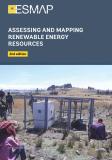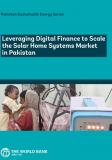Publications
How Small Power Producers and Mini-Grids Can Deliver Electrification and Renewable Energy in Africa
Rural Africa suffers from a chronic and widespread lack of power. One widely cited estimate is that only 14 percent of rural households in Sub- Saharan Africa (excluding South Africa) have access to electricity (IEA 2012). As a first step to improving access, most governments in the region have developed national electrification strategies. Virtually every one of those strategies recommends a two-track approach to providing greater access to grid-based electrification.
On the centralized track, electrification is undertaken by national governmental entities such as the state-owned national utility, a rural electrification agency (REA), or the ministry of energy, acting alone or together. Electrification occurs primarily through extension of the national grid.
By contrast, on the decentralized track, electrification is generally carried out through nongovernmental entities such as cooperatives, community user groups, or private entrepreneurs. These entities will usually construct and operate isolated mini-grids—small-scale distribution networks typically operating below 11 kilovolts (kV) that provide power to one or more local communities and produce electricity from small generators using fossil fuels, renewable fuels, or a combination of the two.
Although there is widespread agreement on the need for a two-track approach, most national electrification strategies contain few, if any, details on how the two tracks should be implemented. This guide looks at how to implement the decentralized track, with particular emphasis on how to create commercially viable small power producers (SPPs) and mini-grids in rural areas.
If the decentralized track is going to be workable, SPPs will need to invest in and operate equipment to produce and distribute electricity to customers such as households, businesses, public institutions, and, in some instances, the national utility. This guide focuses on the regulatory and policy decisions that African electricity regulators and policy makers must make to create a sustainable decentralized track and how the decentralized track can complement the traditional centralized track.
While the principal focus is on SPPs that use renewable energy or cogeneration technologies, most of the regulatory decisions will also apply to SPPs that use fossil fuel or a combination of fossil fuel and renewable energy—that is, hybrid SPPs. Hybrid generating technologies are generally a lower-cost option than diesel generation for serving customers on isolated rural mini-grids.
To make this study as useful as possible for African regulators and energy policy makers, the guide focuses on actual questions that will need to be answered to achieve commercially sustainable outcomes.




